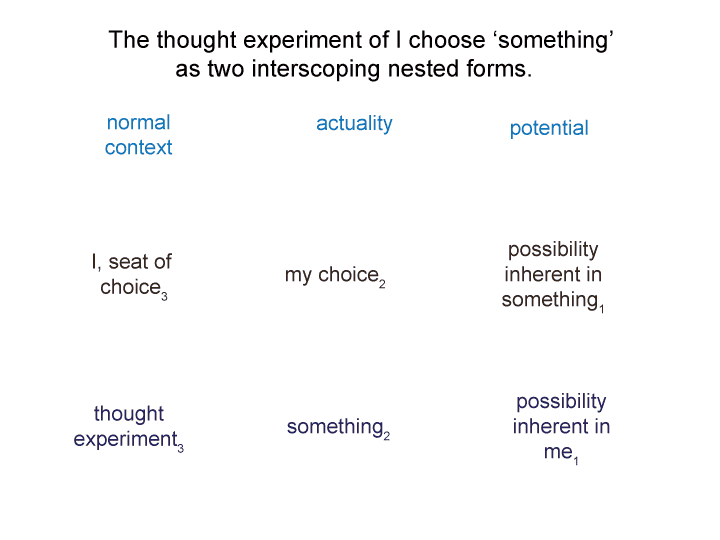Man and Sin by Piet Schoonenberg (1964) 2.3 WN
Summary of text [comment] page 85
[The questions in the previous blogs correlate with the normal contexts of the thought experiment where ‘I choose something’.
Consider the two-level interscope, then the intersection.]
Man and Sin by Piet Schoonenberg (1964) 2.3 WM
Here is another issue that he raised:
Can I be determined by my bondage (as depicted in Manichaeism) in the same way that a pagan’s fate is determined by the stars (as in astrology)?
Man and Sin by Piet Schoonenberg (1964) 2.3 WL
Here is another issue that he raised:
Can I master a secret knowledge that overcomes my bondage, as if we could find a path to release from this world of decay (as implied by Gnostics)?
Man and Sin by Piet Schoonenberg (1964) 2.3 WK
Here is another issue that he raised:
Is our bondage to sin, law and death so complete that free choice is nullified?
Man and Sin by Piet Schoonenberg (1964) 2.3 WJ
Here is another issue that he raised:
How far do the trappings of bondage go?
Man and Sin by Piet Schoonenberg (1964) 2.3 WI
Summary of text [comment] page 85
Schoonenberg wrestled with the knotty issue of the haphazard use of the terms ‘free choice’ and ‘Christian liberty’ in Christian doctrine.
Man and Sin by Piet Schoonenberg (1964) 2.3 WH
[My choice2V and something about me2H solidify into concupiscence, then into cruelty.
Like a dead person, the eyes are open but they cannot see.
Death is the fixation of law. Death is the illusion of words.
Death becomes the mandala of the heart.]
Man and Sin by Piet Schoonenberg (1964) 2.3 WG
[Sin enters through the mirror of the world3H. Sin is the lie within the mirror.
Words. Arguments. Excuses.
They increase my bondage and reduce my capacity for responsibilities.]
Man and Sin by Piet Schoonenberg (1964) 2.3 WF
[Law enters through I, seat of choice3V. It fixates on the something that I may choose1V. My deeds become more and more repetitive. My deeds fall in line with my fixation.]

